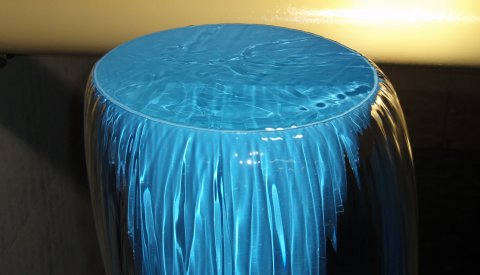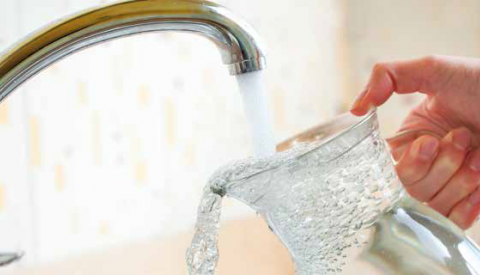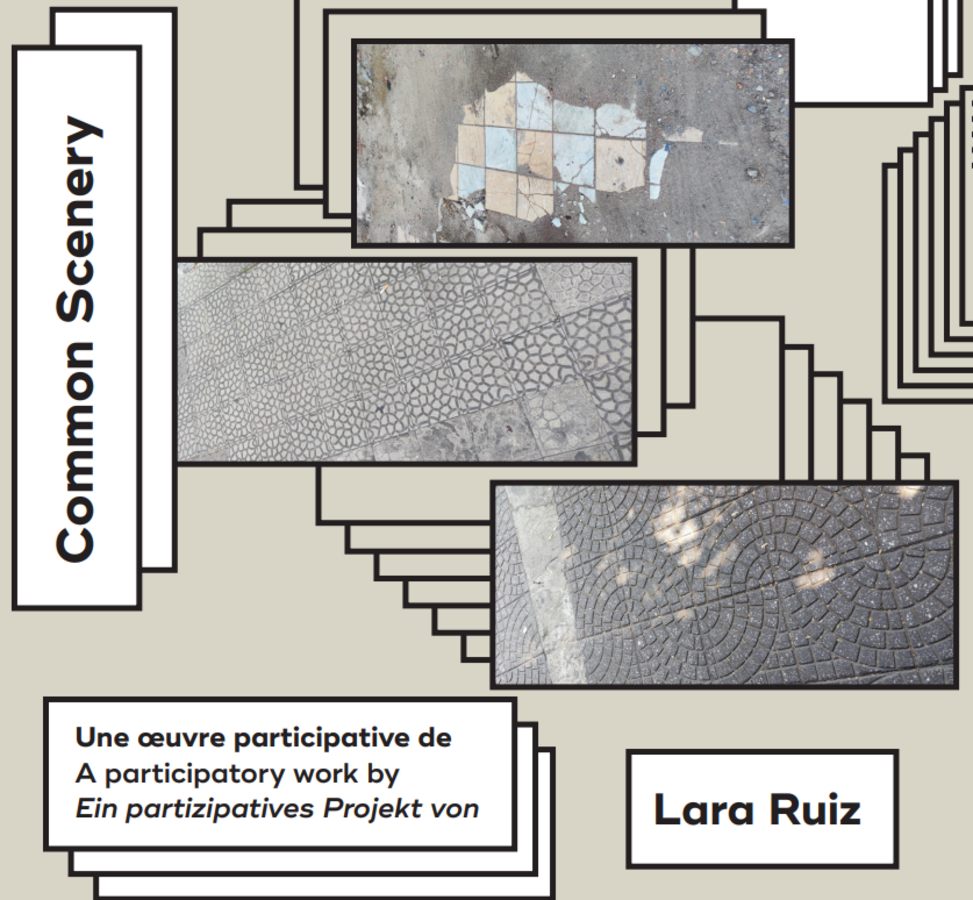Checking the water quality in your home
Enter your address to view the test results for drinking water quality in your area
View the interactive map at maps.vdl.lu
Open mapTest results for drinking water quality
Drinking water is the most strictly regulated and stringently tested foodstuff in the European Union. Its quality is continuously monitored to guarantee its safety for human consumption, and it must comply with very strict standards set forth in the Grand Ducal Regulation of 7 October 2002 on the quality of water intended for human consumption, which itself is based on a European directive.
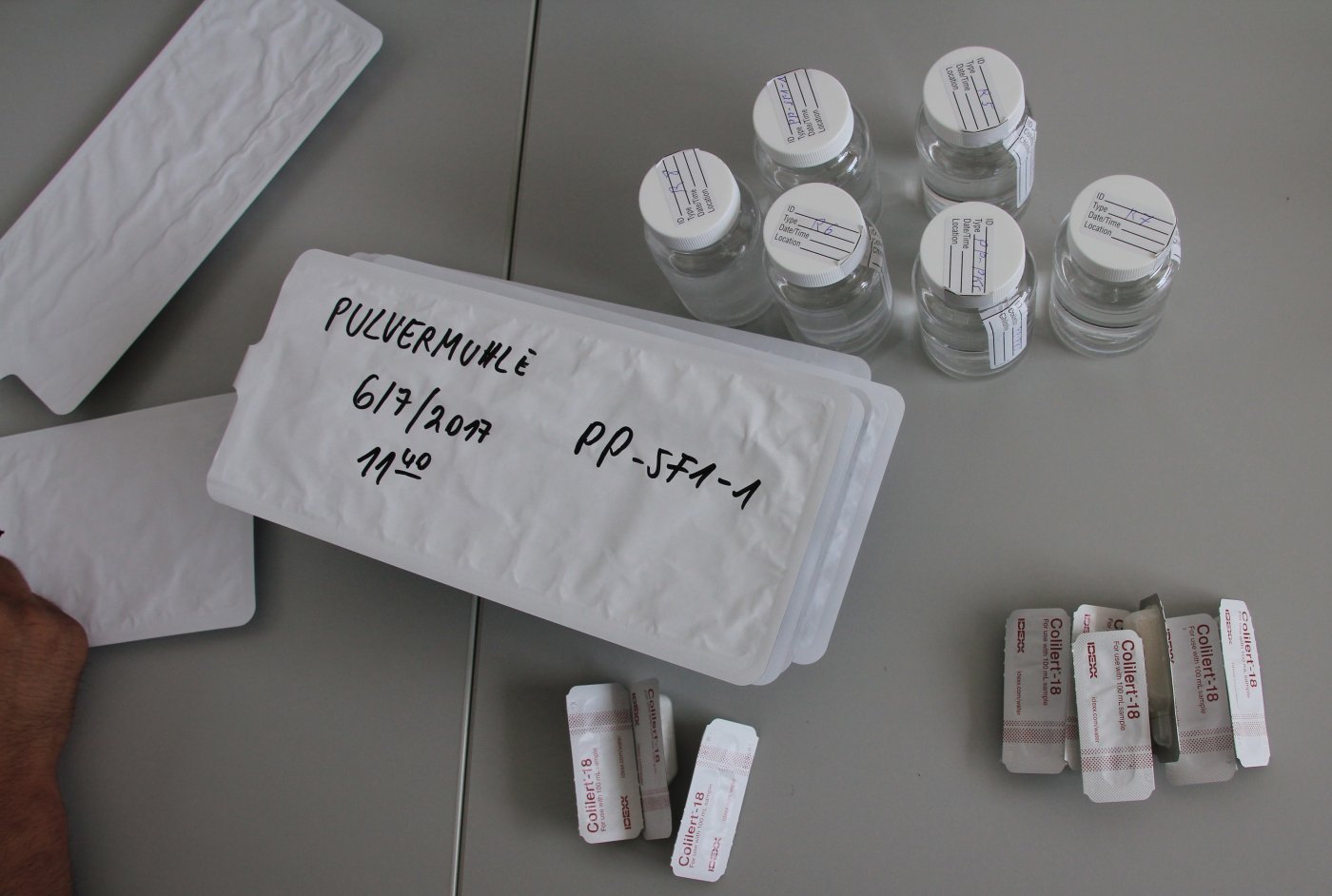
Etiquetage des échantillons
© Ville de LuxembourgTesting of drinking water quality
The water supply is regularly tested for chemicals and bacteria both at the source and across the distribution network, and its quality meets the standards provided for by law.
The number of analyses performed is determined based on the volume distributed or produced each day within a distribution zone. These include, in particular:
• routine testing, which is conducted monthly and analyses of a total of 26 parameters;
• complete testing, which is conducted two to three times per year and analyses of a total of 106 parameters, including 49 different pesticides;
• self-monitoring of springs and reservoirs, which is conducted regularly and includes two sets of complete tests per year, chemical analyses of samples, and weekly tests.
The Service Eaux (Water Department) conducts a total of over 2,000 tests per year.
Procedure for weekly analyses



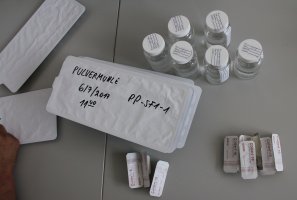







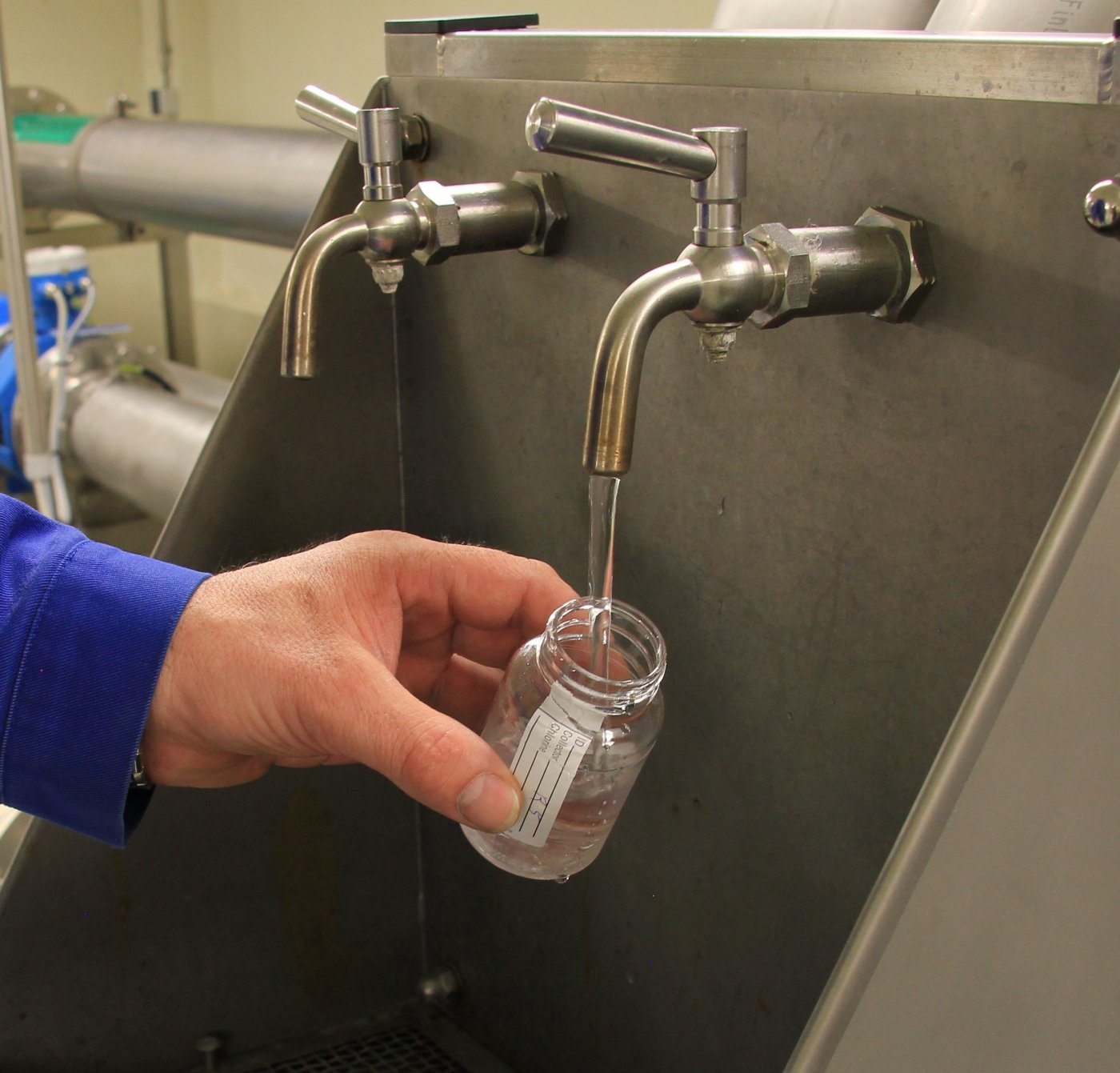






Glossary
Microbiological quality
The water's microbiological quality is assessed by regularly screening for waterborne bacteria that could contaminate consumers.
Hardness
Water hardness is determined by the amount of calcium and magnesium salts naturally present in the water. It is expressed in degrees, and varies between 0° and 50°.
Nitrates
Nitrates occur naturally in the ground and in the water supply. Excessive or poorly managed nitrate content in fertilisers leads to a build-up of nitrates in natural resources. To be considered safe for consumption by pregnant women and infants, water must not contain more than 50 mg of nitrates per litre.
Pesticides
The presence of pesticides in natural resources is caused by poor management of products used to protect crops or to kill weeds. Certain pesticides have or may have effects on human health when absorbed throughout a lifetime. The regulatory maximum of 0.1 mg/litre is lower than known toxicity thresholds.
Fluoride
Fluoride is a trace element that is naturally present in water. Moderate doses are beneficial to human health. A maximum regulatory limit of 1.5 mg/litre has been set to take account of the risks of dental fluorosis (traces on dental enamel). Public drinking water has an average fluoride content of 0.083 mg/litre: fluoride supplementation may be recommended, on medical advice.
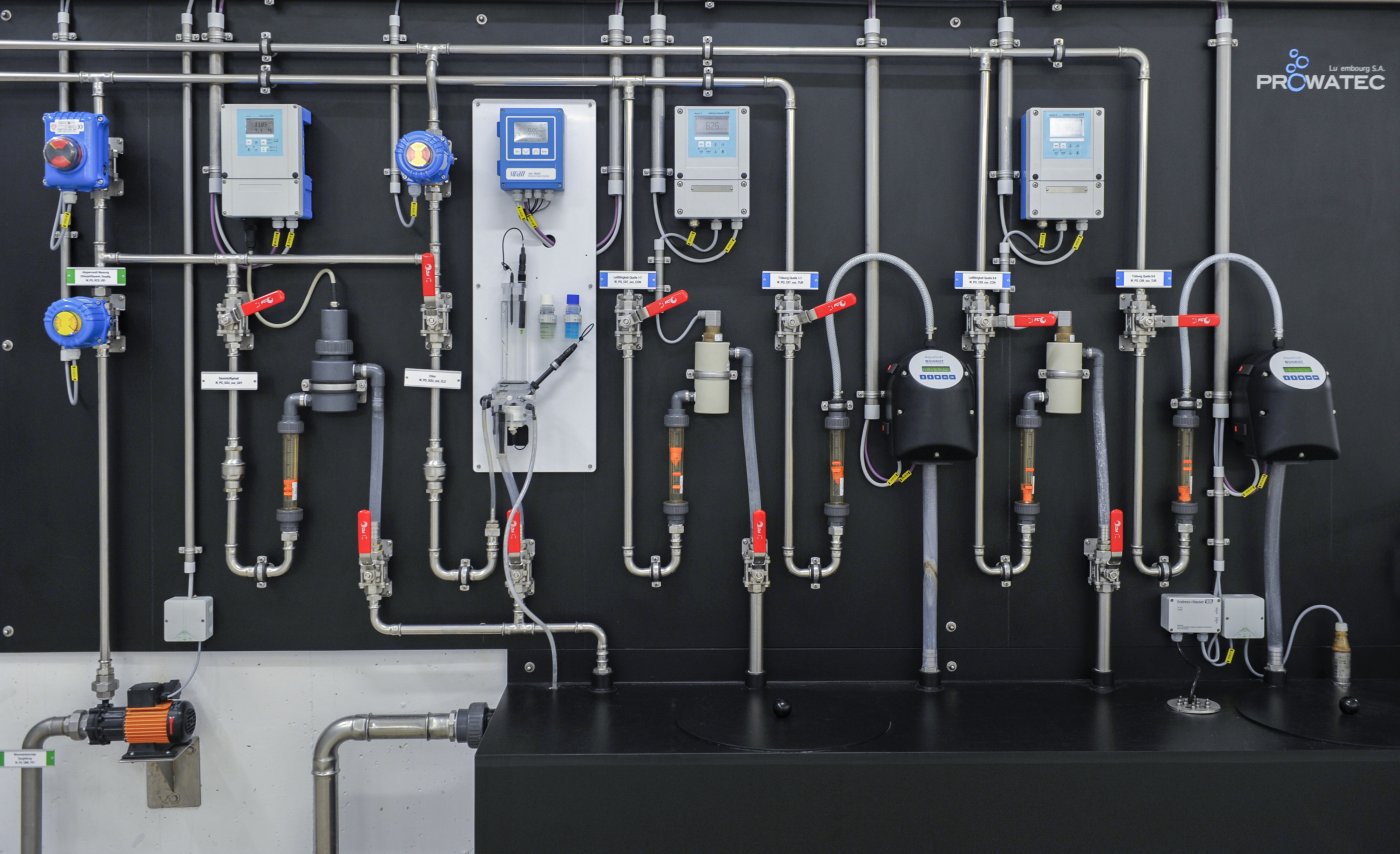
Recommendations
Filters
To prevent the introduction of particulates that may promote pit-type corrosion in pipes, we recommend installing a strainer-type filter – preferably self-cleaning (porosity of 100 microns) – at the point where the pipe enters the building. This device must be regularly checked and cleaned.
Lead
Where water has remained still for more than eight hours, the lead content in old pipes and/or internal networks may leach into the water. For this reason, if you are away from home for an extended period, we recommend that you let your taps run for a while before using the water.
Iron
Iron is not dangerous to human health, but its presence in water can be a nuisance, in particular when washing textiles. If you notice that your water has an unusual colour or taste, you should inform your supplier.
Cold-water systems
Generally, cold water distributed by the City requires no treatment.
Hot water systems
Whether or not treatment is required depends primarily on the temperature of use and the type of water. If, through the use of a thermostat, the water temperature never exceeds 55-60° in the pipes, additional treatment is unnecessary.
Water quality and detergents
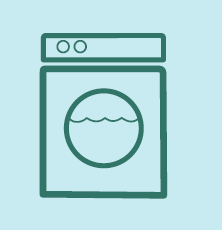
Knowing the hardness of your water is also important in the choice of laundry detergents, in order to avoid excess detergents and phosphates (fertilisation) in the residual water and, therefore, excessive eutrophication of the receiving waters. As calcium in the water has a negative effect on the cleansing power of detergents, calcium stabilisers are added, usually in the form of phosphates. The exact amount of these products used should be determined based on the hardness of the water, and we recommend following the instructions that can be found on the packaging of all products for sale in the Grand Duchy of Luxembourg.
Water treatment equipment
When is a water softener useful?
A water softener may be used if the hardness of the water exceeds 17 German degrees * (30 French degrees), and should only be installed for hot water. Setting the temperature of the boiler – that is, the temperature of the hot water – to between 55°C and 60°C will prevent most calcium deposits.
A water softener replaces calcium and magnesium with sodium to prevent the calcium from forming a precipitate in the hot water.
| HARDNESS ZONE | PREPARATION | |
| 1. Very soft water 0 – 9 °f 0 – 5 °dH | Generally speaking, water is corrosive when it has excess carbonic acid. Exception: SEBES - water | Addition of orthophosphates or silicates to form a protective coating inside the water pipe. |
| 2. Soft water 9 – 16 °f 5 – 9 °dH | Soft water, generally not corrosive | No reprocessing required |
| 3. Moderately hard water 16 – 25 °f 9 – 14°dH | Water with ideal hardness level | If absolutely necessary, addition of polyphosphates to prevent the build-up of calcium deposits in boilers and instantaneous water heaters. |
| 4. 25 – 36 °f 14 – 20 °dH | Calcium deposits in the hot water system. | Addition of polyphosphates to prevent calcium deposits in the hot water system: boilers, instantaneous water heaters and hot water supply lines. |
| 5. > 36 d°fr > 20°dH | Significant build-up of calcium deposits | Addition of polyphosphates or installation of a water softener (ion exchanger) to improve comfort. |
* Water hardness is measured either in French degrees (°f) or German degrees (°dH) (1°fr = 0.56 °dH).
What should I pay attention to if I install a water softener?
For softened water, make sure to maintain a residual hardness of 6–9 German degrees (10–15 French degrees) to avoid corrosion problems in the internal water system. If you install a water softener, do so only on the hot water system because high sodium concentration levels in cold water is not healthy.
It is vital to have these treatment systems professionally maintained, and we strongly recommend that you do so to prevent bacteriological contamination of the internal water system. We advise against installing a water softener in a heated room because heat fosters bacteria growth.
What should I pay attention to if I install a polyphosphate dosing system?
These treatment systems achieve the purpose they were designed for by adding polyphosphates or polysilicates to water to form complexes with calcium and magnesium cations, thus preventing calcium precipitation. An additional benefit of these systems is that they cause a protective coating to be formed inside water pipes, which is especially useful if there are existing corrosion problems.
We strongly recommend that you use treatment systems in which the amount of polyphosphates added is based on the water flow rate so as to avoid adding too much. The systems and additives you use must be approved for drinking water.
It is vital to have these treatment systems professionally maintained, and we strongly recommend that you do so. In addition, these treatment systems should be installed only on hot water systems. To get the best results from these dosing systems, make sure the temperature of the hot water never exceeds 60°C, as the complexes that form are destroyed in water hotter than 60°C.
Link

